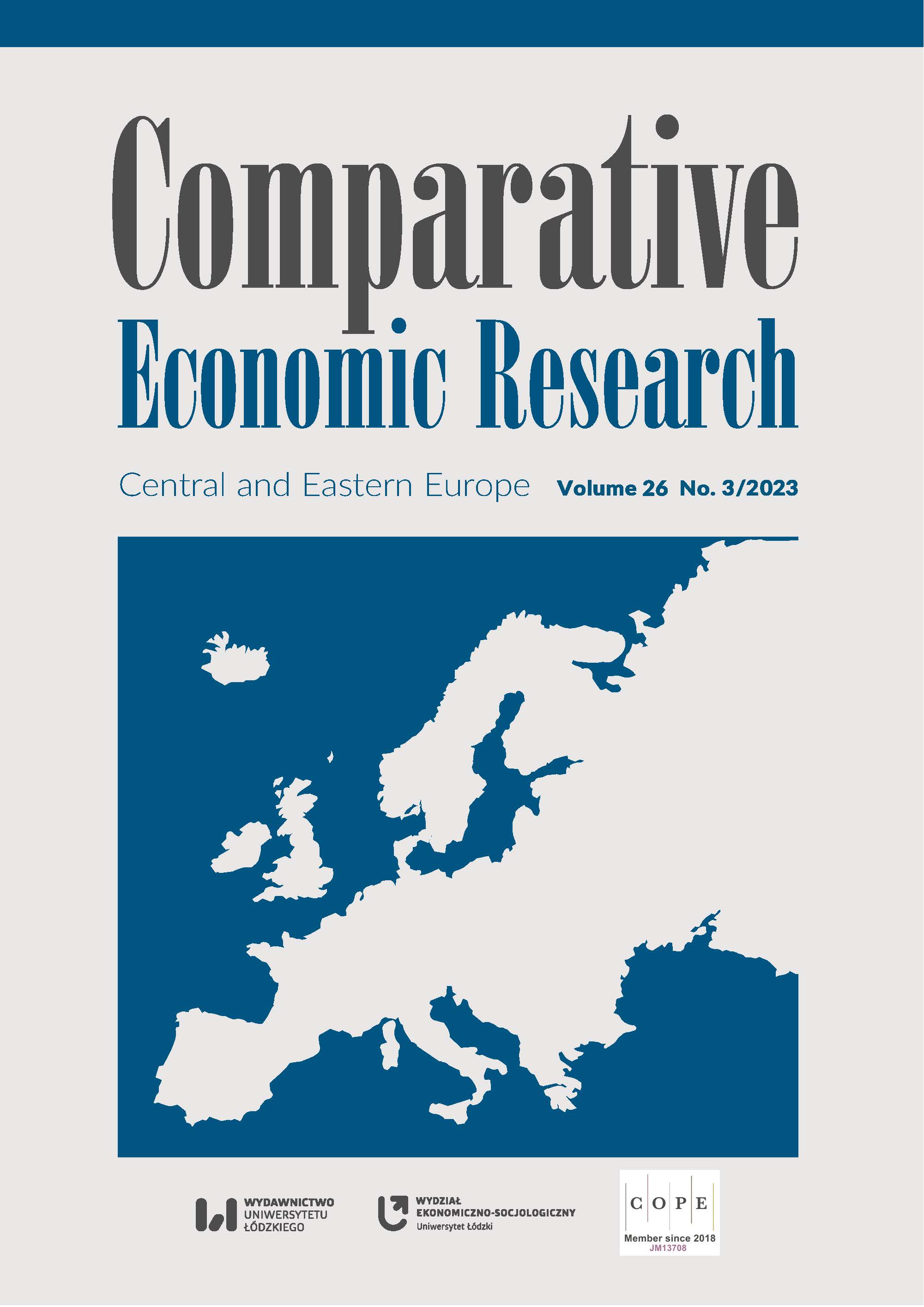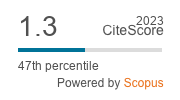Smart Cities for the Sustainable Development of Local Communities: the Cases of the Volyn Region and the City of Lublin
DOI:
https://doi.org/10.18778/1508-2008.26.21Keywords:
smart city, local community, sustainable development, Benessere equo e sostenibile dei Territori (BESdT), city budgetAbstract
The concept of a “smart city” is being actively implemented by several European cities to improve citizens’ quality of life and sustainability at the local community level. The article evaluates “smart city” programs adopted by Ukraine cities in the Volyn region based on well‑being assessment. To do so, a literature review was conducted to identify indicators to assess well‑being at the local level, and Benessere equo e sostenibile dei territori (BESdT, Equitable, and Sustainable Territorial Well‑being) was adopted. BESdT is an institutional measurement framework developed by the Italian National Institute of Statistics (ISTAT) to measure well‑being at the local level through a collection of indicators that cover different well‑being domains. The BESdT indicators available for Ukraine and Poland were collected and then measured. The main goals of the scientific research are to clarify if it is possible to use the BESdT indicators, which are used to assess smart cities in Southern Europe, for the countries of North‑Eastern Europe using the example of the Volyn region and the city of Lublin. The work investigates the indicators of smart cities and considers examples of their construction for 2003–2021. The results testify to the upward trend in implementing “smart city” programs in the regional context. In the Volyn region, the priority areas of project implementation are security, transport, and electricity. In this region, development can be identified concerning trends such as a reduced death rate, an improved balance between work and personal life, increased economic prosperity, and the improved environmental component and security of society. On the other hand, a reduction in innovation implementation and a loss of trust in the government were also identified. The analysis shows that the positive changes above are due to the actions of the central rather than the regional government. Based on the analysis, it was established that the countries of North‑Eastern Europe have the level of development of Smart City 3.0, except for Ukraine, which has generation 1.0, and in Southern Europe, generation 4.0.
Downloads
References
Albino, V., Berardi, U., Dangelico, R.M. (2015), Smart Cities: Definitions, Dimensions, Performance, and Initiatives, “Journal of Urban Technology”, 22 (1), pp. 3–21, https://doi.org/10.1080/10630732.2014.942092
Google Scholar
DOI: https://doi.org/10.1080/10630732.2014.942092
Antoniuk, I.V., Koshova, S.P. (2021), Introduction of smart~city programs in large cities: domestic and foreign experience, “Investments: Practice and Experience”, 18.
Google Scholar
DOI: https://doi.org/10.32702/2306-6814.2021.18.99
Barrionuevo, J.M., Berrone, P., Ricart, J.E. (2012), Smart Cities, Sustainable Progress, “IESE Insight”, 14.
Google Scholar
Battis-Schinker, E., Al-Alawi, S., Knippschild, R., Gmur, K., Książek, S., Kukuła, M., Belof, M. (2021), Towards quality of life indicators for historic urban landscapes–insight into a German-Polish research project, “Environmental and Sustainability Indicators”, 10, 100094, https://doi.org/10.1016/j.indic.2020.100094
Google Scholar
DOI: https://doi.org/10.1016/j.indic.2020.100094
Bellantuono, N., Lagrasta, F.P., Pontrandolfo, P., Scozzi, B. (2021), Well-Being and Sustainability in Crisis Areas: The Case of Taranto, “Sustainability”, 23.
Google Scholar
DOI: https://doi.org/10.3390/su13031576
Buzko, I., Vartanova, O., Trunina, I., Khovrak, I. (2019), Theoretical aspects of regional sustainable development in the EU and Ukraine, “Innovative Economic Symposium 2018 – Milestones and Trends of World Economy (IES2018)”, 61, 01001, https://doi.org/10.1051/shsconf/20196101001
Google Scholar
DOI: https://doi.org/10.1051/shsconf/20196101001
Calcagnini, G., Perugini, F. (2019), A well-being indicator for the Italian provinces, “Social Indicators Research”, 142 (1), pp. 149–177, https://doi.org/10.1007/s11205-018-1888-1
Google Scholar
DOI: https://doi.org/10.1007/s11205-018-1888-1
Caragliu, A., Del Bo, C., Nijkamp, P. (2011), Smart Cities in Europe, “Journal of Urban Technology”, 18 (2), pp. 65–82, https://doi.org/10.1080/10630732.2011.601117
Google Scholar
DOI: https://doi.org/10.1080/10630732.2011.601117
Central and Eastern Europe (n.d.), https://uk.wikipedia.org/wiki/Центральна_та_Східна_Європа#cite_note-6 (accessed: 30.03.2022).
Google Scholar
Christopherson, S., Michie, J., Tyler, P. (2010), Regional resilience: Theoretical and empirical perspectives, “Cambridge Journal Regions, Economy and Society”, 3 (1), pp. 3–10, https://doi.org/10.1093/cjres/rsq004
Google Scholar
DOI: https://doi.org/10.1093/cjres/rsq004
Diia Business. Trade Whit Ukraind (n.d.), https://export.gov.ua/49-kraini_ta_rinki (accessed: 30.03.2021).
Google Scholar
European Commission (2010), Europe 2020 A strategy for smart, sustainable and inclusive growth, Communication from the Commission, COM(2010) 2020, https://ec.europa.eu/eu2020/pdf/COMPLET%20EN%20BARROSO%20%20%20007%20-%20Europe%202020%20-%20EN%20version.pdf (accessed: 16.05.2022).
Google Scholar
European Environment Agency (n.d.), Poland – Air pollution country fact sheet, https://www.eea.europa.eu/themes/air/country-fact-sheets/2021-country-fact-sheets/poland (accessed: 14.05.2022).
Google Scholar
Eurostat (2023), Statistics on young people neither in employment nor in education or training, https://ec.europa.eu/eurostat/statistics-explained/index.php?title=Statistics_on_young_people_neither_in_employment_nor_in_education_or_training (accessed: 14.05.2022).
Google Scholar
Fry, B.P., Agarwala, M., Atkinson, G., Clements, T., Homewood, K., Mourato, S., Milner-Gulland, E.J. (2017), Monitoring local well-being in environmental interventions: A consideration of practical trade-offs, “Oryx”, 51 (1), pp. 68–76, https://doi.org/10.1017/S003060531500112X
Google Scholar
DOI: https://doi.org/10.1017/S003060531500112X
Giffender, R., Fertner, C., Kramar, H., Kalasek, R., Pichler-Milanovic, N., Meijers, E. (2007), Smart cities: ranking of European medium-sized cities, Vienna: Centre of Regional Science, http://curis.ku.dk/ws/files/37640170/smart_cities_final_report.pdf (accessed: 18.06.2021).
Google Scholar
Global Data (n.d.), Literacy Rate in Poland (2010–2021, %), https://www.globaldata.com/data-insights/macroeconomic/literacy-rate-in-poland/ (accessed: 14.05.2022).
Google Scholar
Glonti, V., Trynchuk, V., Khovrak, I., Mokhonko, G., Shkrobot, M., Manvelidze, L. (2020), Socialization of organization sustainable development based on the principles of corporate social responsibility, “Montenegrin Journal of Economics”, 16 (1), pp. 169–182, https://doi.org/10.14254/1800-5845/2020.16-1.11
Google Scholar
DOI: https://doi.org/10.14254/1800-5845/2020.16-1.11
GUS (n.d.), https://stat.gov.pl (accessed: 14.05.2022).
Google Scholar
GUS (2022), Pomoc społeczna i opieka nad dzieckiem i rodziną w 2021 roku, https://stat.gov.pl/obszary-tematyczne/warunki-zycia/ubostwo-pomoc-spoleczna/pomoc-spoleczna-i-opieka-nad-dzieckiem-i-rodzina-w-2021-roku,10,13.html (accessed: 14.05.2022).
Google Scholar
Huovila, A., Bosch, P., Airaksinen, M. (2019), Comparative analysis of standardized indicators for Smart sustainable cities: What indicators and standards to use and when?, “Cities”, 89, pp. 141–153, https://doi.org/10.1016/j.cities.2019.01.029
Google Scholar
DOI: https://doi.org/10.1016/j.cities.2019.01.029
Ilość zabójstw w Polsce. Gdzie popełniono najwięcej morderstw? (2020), https://www.ciekawestatystyki.pl/2022/09/zabojstwa-w-polsce.html (accessed: 14.05.2022).
Google Scholar
ISTAT (2013), Rapporto BES 2013: Il benessere equo e sostenibile in Italia, https://www.istat.it/it/archivio/84348 (accessed: 10.06.2021).
Google Scholar
ISTAT (2019), Rapporto BES 2019: Il benessere equo e sostenibile in Italia, https://www.istat.it/it/archivio/236714 (accessed: 11.02.2022).
Google Scholar
Kourtit, K., Nijkamp, P., Arribas, D. (2012), Smart cities in perspective – a comparative European study by means of self-organizing maps, “Innovation: The European Journal of Social Sciences”, 25 (2), pp. 229–246, https://doi.org/10.1080/13511610.2012.660330
Google Scholar
DOI: https://doi.org/10.1080/13511610.2012.660330
Kuzmak, O., Kuzmak, O., Pohrishchuk, B. (2021), Sustainable development: trends and realities of Ukraine, “E3S Web of Conferences 255, 01035 (2021) ISCMEE 2021”, https://doi.org/10.1051/e3sconf/202125501035
Google Scholar
DOI: https://doi.org/10.1051/e3sconf/202125501035
Lazar, D., Litan, C.M. (2022), Regional well-being in Romania: assessment after a decade of EU accession, “International Journal of Social Economics”, 49 (7), pp. 1009–1028, https://doi.org/10.1108/IJSE-08-2021-0480
Google Scholar
DOI: https://doi.org/10.1108/IJSE-08-2021-0480
Local elections in Ukraine: how turnout has changed since independence (2020), https://www.slovoidilo.ua/2020/10/27/infografika/polityka/miscevi-vybory-ukrayini-yak-zminyuvalasya-yavka-period-nezalezhnosti (accessed: 14.05.2022).
Google Scholar
Lombardi, P., Giordano, S., Farouh, H., Yousef, W. (2012), Modelling the smart city performance, “Innovation: The European Journal of Social Science Research”, 25 (2), pp. 137–149, https://doi.org/10.1080/13511610.2012.660325
Google Scholar
DOI: https://doi.org/10.1080/13511610.2012.660325
Macrotrends (n.d.), Poland Infant Mortality Rate 1950–2023, https://www.macrotrends.net/countries/POL/poland/infant-mortality-rate (accessed: 14.05.2022).
Google Scholar
Mahizhnan, A. (1999), Smart cities: The Singapore case, “Cities”, 16 (1), pp. 13–18, https://doi.org/10.1016/S0264-2751(98)00050 X
Google Scholar
DOI: https://doi.org/10.1016/S0264-2751(98)00050-X
Monitoring of socio-economic development of the regions of Ukraine (2021), https://ndc-ipr.org/media/posts/presentations/Моніторинг_СЕРР_12м2021_2022.04.01.pdf (accessed: 30.04.2022).
Google Scholar
Nałęcz, S. (n.d.), Young adult NEETs aged 25–29 in Poland, Czech Republic and Slovakia, http://www.youth-impact.eu/wp-content/uploads/2022/03/Expert-study_3.pdf (accessed: 14.05.2022).
Google Scholar
Nam, T., Pardo, T.A. (2011), Conceptualizing Smart City with Dimensions of Technology, People, and Institutions, Proc. 12th Annual International Conference on Digital Government Research, College Park, MD, USA (12–15 June 2011), pp. 282–291, https://doi.org/10.1145/2037556.2037602
Google Scholar
DOI: https://doi.org/10.1145/2037556.2037602
New rayons: maps and structure (2020), https://decentralization.gov.ua/news/12639 (accessed: 30.03.2021).
Google Scholar
Official data of the Main Department of Statistics in Volyn region (n.d.), http://www.lutsk.ukrstat.gov.ua/ (accessed: 30.03.2021)
Google Scholar
Official data of the State Statistics Service of Ukraine (n.d.), http://www.ukrstat.gov.ua/ (accessed: 30.03.2021).
Google Scholar
Official site of Lutsk City Council (2019), Decision of the City Council of June 26, 2019 № 58/56 Lutsk “On approval of the city complex program” Safe City of Lutsk “for 2019–2021”, https://www.lutsk-rada.gov.ua/documents/pro-zatverdzhennia-miskoi-kompleksnoi-prohramy-bezpechne-misto-lutsk-na-2019-2021-roky (accessed: 30.03.2022).
Google Scholar
Patent Office of the Republic of Poland (n.d.), https://uprp.gov.pl/ (accessed: 14.05.2022).
Google Scholar
Plokhiy, S. (2011), “New Eastern Europe”: a geopolitical whim or a historiographical find?, “East European Politics & Societies”, 25 (4), pp. 763–769, https://www.historians.in.ua/index.php/en/doslidzhennya/550-serhii-plokhiy-nova-skhidna-yevropa-heopolitychna-prymkha-chy-istoriohrafichna-znakhidka (accessed: 30.03.2022).
Google Scholar
DOI: https://doi.org/10.1177/0888325411398914
Polinkevych, O.M. (2014), Substantiation of expediency of clustering of business processes of industrial enterprises (on the example of Volyn region), “Actuals Problems of Economics”, 7.
Google Scholar
Polinkevych, O.M. (2016a), Methodical approaches to the selection of experts to assess the innovative development of enterprises, “Actuals Problems of Economics”, 2 (176).
Google Scholar
Polinkevych, O.M. (2016b), Selection criteria for expert evaluation method of enterprise innovation driven development, “Actual Problems of Economics”, 177 (3).
Google Scholar
Polinkevych, O.M. (2016c), Estimation of external preconditions of formation of corporate management at the enterprises, “Actual Problems of Economy”, 4 (178), pp. 126–132, http://nbuv.gov.ua/UJRN/ape_2016_4_19 (accessed: 30.03.2022).
Google Scholar
Polinkevych, O.M. (2016d), Problems of corporate governance development in Ukraine, “Actual Problems of Economy”, 5 (179), pp. 191–196, http://nbuv.gov.ua/UJRN/ape_2016_5_22 (accessed: 30.03.2022).
Google Scholar
Polinkevych, O., Kamiński, R. (2018), Corporate image in behavioral marketing of business entities, “Innovative Marketing”, 14 (1), pp. 33–40, https://doi.org/10.21511/im.14(1).2018.04
Google Scholar
DOI: https://doi.org/10.21511/im.14(1).2018.04
Polinkevych, O., Glonti, V., Baranova, V., Levchenko, V., Yermoshenko, A. (2021a), Change of business models of Ukrainian insurance companies in the conditions of COVID–19, “Insurane Markets and Companies”, 12 (1), pp. 83–98, https://doi.org/10.21511/ins.12(1).2021.08
Google Scholar
DOI: https://doi.org/10.21511/ins.12(1).2021.08
Polinkevych, O., Khovrak, I., Trynchuk, V., Klapkiv, Y., Volynets, I. (2021b), Business Risk Management in Times of Crises and Pandemics, “Montenegrin Journal of Economics”, 17 (3), pp. 99–110, https://doi.org/10.14254/1800-5845/2021.17-3.8
Google Scholar
DOI: https://doi.org/10.14254/1800-5845/2021.17-3.8
Roman, K. (2018), Analysis and evaluation of the implementation level of the smart city concept in selected Polish cities, BRAIN, “Broad Research in Artificial Intelligence and Neuroscience”, 9 (1).
Google Scholar
Rudke M. (2022), Dochody gospodarstw domowych rosły. Jednak udział wydatków się zwiększył i podobnie może być w tym roku, Business Insider, https://businessinsider.com.pl/gospodarka/makroekonomia/dochody-rozporzadzalne-polskich-gospodarstw-domowych-rosly-jednak-udzial-wydatkow-się/th1w47r (accessed: 14.05.2022).
Google Scholar
Smart City Lublin (n.d.), Wskaźniki miasta inteligentnego, https://smartcity.lublin.eu/smart-city-lublin/wskazniki-miasta-inteligentnego/ (accessed: 14.05.2022).
Google Scholar
The New Leipzig Charter (2020), The transformative power of cities for the common good, Adopted at the Informal Ministerial Meeting on Urban Matters on 30 November 2020, https://ec.europa.eu/regional_policy/en/newsroom/news/2020/12/12-08-2020-new-leipzig-charter-the-transformative-power-of-cities-for-the-common-good (accessed: 30.03.2021).
Google Scholar
Thuzar, M. (2011), Urbanization in South East Asia: developing smart cities for the future?, [in:] M.J. Montesano, P.O. Lee (eds.), Regional Outlook, ISEAS Publishing, pp. 96–100, https://doi.org/10.1355/9789814311694-022
Google Scholar
DOI: https://doi.org/10.1355/9789814311694-022
Trynchuk, V., Khovrak, I., Dankiewicz, R., Ostrowska-Dankiewicz, A., Chushak-Holoborodko, A. (2019), The role of universities in disseminating the social responsibility practices of insurance companies, “Problems and Perspectives in Management”, 17 (2), pp. 449–461, https://doi.org/10.21511/ppm.17(2).2019.35
Google Scholar
DOI: https://doi.org/10.21511/ppm.17(2).2019.35
UNGEGN (n.d.), United Nations Group of Experts on Geographical Names, https://unstats.un.org/unsd/ungegn/divisions/ (accessed: 30.03.2022).
Google Scholar
Downloads
Published
How to Cite
Issue
Section
License

This work is licensed under a Creative Commons Attribution-NonCommercial-NoDerivatives 4.0 International License.











